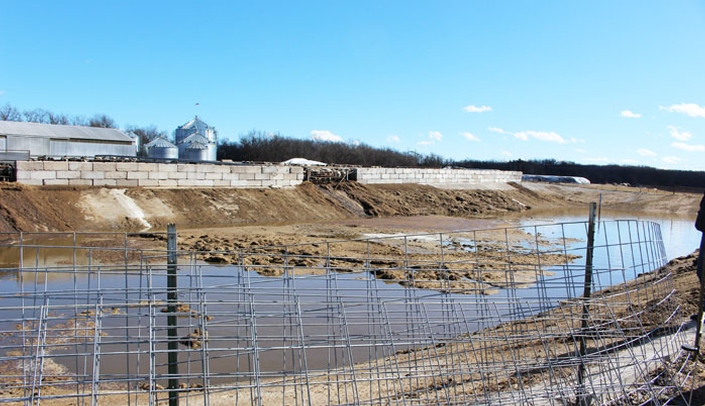Some of the stories are painful, but those sharing their farm experiences through the "Telling the Story Project" firmly believe in the website’s tagline – tell a story, save a life. Article topics featured on the site include ATVs, equipment upgrades, falls, farming with injuries, fire, foaming manure and ladder safety.
"Research indicates that farmers are more open to safety messages after reading about a traumatic farm incident," said Ellen Duysen, coordinator and outreach specialist for the Central States Center for Agricultural Safety and Health (CS-CASH) at the University of Nebraska Medical Center College of Public Health. "Farmers generally consider other farmers and agricultural publications to be trusted sources of information."
Tellingthestoryproject.org provides a venue for farmers who have been impacted by fatal and non-fatal agricultural workplace injuries to share their experiences and offer insight for injury prevention.
"Workers, family and community members have all shared stories through the site," Duysen said. "The stories are told in their own words. Their experiences help teach us what went wrong and how to avoid similar incidents. They tell their story because we don’t want this to happen to anyone else."
Duysen, who raised hogs, cattle and three "rascally boys" on farms in Colorado and Iowa, is one of five team members involved in the site. Her personal farming experience provided understanding of the many farming and ranching hazards. While conducting educational outreach with ag communities, Duysen heard many stories of work-related injuries and fatalities. She believes stories told by those who had the experiences raises awareness and stimulates conversations about how to prevent similar incidents.
Fellow team members, Stephanie Leonard, Scott Heiberger, Melissa Ploeckelman, and Aaron Yoder, Ph.D., also work in the agricultural safety and health industry.
Leonard, who grew up on a northwest Iowa farm, works as an industrial hygienist and occupational safety manager at the University of Iowa. She is an outreach team member with the Great Plains Center for Agricultural Health (GPCAH), providing health and safety consulting services to a wide range of employers that includes farmers and agribusinesses.
Heiberger is health communications manager at the National Farm Medicine Center (NFMC) and a member of the Upper Midwest Agricultural Safety and Health Center (UMASH). A former newspaper reporter, Heiberger produces agricultural safety and health content for a variety of platforms and assists media professionals.
Ploeckelman is the National Farm Medicine Center’s full-time outreach specialist and member of the Upper Midwest Agricultural Safety and Health Center outreach team. Formerly an agricultural instructor, Ploeckelman has always lived and worked in central Wisconsin, where she helps with her family’s dairy, and is pleased to take part in helping others learn about safety before an injury occurs.
Dr. Yoder, who grew up in central Pennsylvania, spent time working on his grandfather’s farm before studying agricultural safety and health at Penn State and Purdue. His study focus included injury reporting and data collection. Currently an assistant professor in the UNMC Department of Environmental, Agricultural and Occupational Health, Dr. Yoder works with CS-CASH projects.
One of the storytellers, Leon Sheets of Ionia, Iowa, shared his experience with a flash fire in his swine finishing building in 2014 while he was rinsing off the building’s floor. He didn’t know methane gas from the building pit was released into the air when water spray broke the pit foam 18 inches below the slatted floor. He was engulfed by a fire ball that burned 20 percent of his body, including his farms, hands, and face, and melted his glasses. He now practices and promotes safety.
Mike Biadasz, "a passionate young farmer" from Amherst, Wis., died when he was overcome by hydrogen sulfide gas as he agitated manure in the open lagoon of his family’s cattle feeding operation. The gas also killed 16 nearby cattle. His family has become farm safety advocates. They raise funds for safety workshops and regularly work through the media to share Mike’s story.
Kenny Patterson, of Cherokee, Iowa, experienced five hours of excruciating pain and suffering when his four-wheeler overturned and rolled over him as he was spot-spraying thistles in one of his pastures. His lower body was so impacted by the accident that he had to crawl home from the accident scene, using just his arms.
"I was instantly mad at myself," Patterson said. "What I did (driving on a sloped grade with uneven terrain) was stupid."
The site also includes links to major ag safety resources such as the National Ag Safety Database, the US Agricultural Health and Safety Centers YouTube channel, Farm & Ranch eXtension in Safety and Health (FReSH) Community of Practice (CoP) and Ireland’s Health and Safety Authority (HAS) Survivor Stories.
Links to "stories with impact" also put readers in touch with online articles such as Iowa’s Ginnie Peters and Kansas farmer John Blaske, both farmers who have been affected by or considered suicide. This page also features a link to the short documentary film, "Edge of the Real World," which points to the risks and rewards of grain farming. It describes grain entrapment hazards and includes links on grain handling safety.
"We encourage site visitors to share links to our stories," Duysen said. "They may be republished without further permission as long as they’re published as written. We simply ask that the work be credited to the author, photographer videographer and/or graphic artist along with a note that the story was produced by TellingtheStoryProject.org.
"We’re creating injury prevention messages that highlight personal stories and firsthand experiences. No one wants to see any of these incidents happen to anyone else."
We are Nebraska Medicine and UNMC. Our mission is to lead the world in transforming lives to create a healthy future for all individuals and communities through premier educational programs, innovative research and extraordinary patient care.
